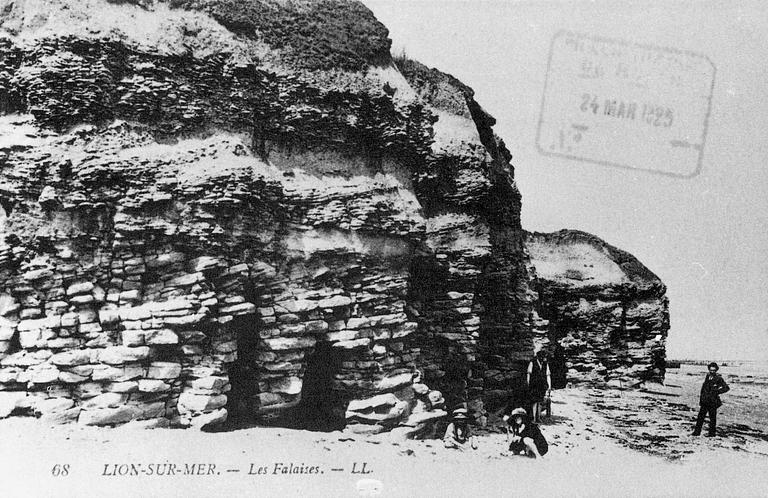Carl Fredrik Hill
Coastal Landscape, Luc-sur-Mer (towards the Cliff of Lion-sur-Mer)
Executed 1876. Oil on cardboard 37 x 45 cm
Alkuperä - Provenienssi
Previously in the collections at Torup Castle, Bara Parish, Skåne
Näyttelyt
Malmö Museum, 'Carl Fredrik Hill - retrospektiv utställning', 1933, cat. no. 74.
Galleri Färg och Form, Stockholm, "Carl Fredrik Hill (1849-1911)", February 1943, cat. no. 54.
Malmö Rådhus, exhibition arranged by Föreningen Malmö Konsthall, 'Carl Fredrik Hill (1849-1911)', March 1943, cat. no. 50.
Nationalmuseum, Stockholm, "Carl Fredrik Hill - Memorial Exhibition", September - October 1949, cat. no. 52.
Skånska Konstmuseer, "För att känna Hill", 19 April - 3 May 1953, cat. no. 17.
Nationalmuseum, Stockholm, "Carl Fredrik Hill", 1 October 1999 - 16 January 2000, cat. no. 49.
Kirjallisuus
Erik Blomberg, "Carl Fredrik Hill. Hans friska och sjuka konst", 1949, illustrated full-page pl. 18.
Adolf Anderberg, "Carl Hill. Hans liv och hans konst", 1951, illustrated full-page pl. 77.
Sten Åke Nilsson, "Carl Fredrik Hill. Maximus Pictor", 2011, illustrated full-page p. 108.
Muut tiedot
In August 1876, Carl Fredrik Hill arrived in Luc-sur-Mer in Normandy, on the Northern french Atlantic coast. During the two years he spent in Paris, he initially received favourable reviews and had his first painting accepted for the Salon. He finally felt free from the strict Swedish Royal Academy of Art and could paint in a new environment. He was greatly inspired by Camille Corot, the famous French landscape painter. In the following years, he travelled and sought new subjects in the surrounding areas outside the city. Rail travel had taken off in Europe and new train stations had opened on the lines leaving Paris. The development of the railway enabled Hill to travel extensively between 1873 and 1876. His journeys started in Paris and stretched from the Atlantic coast in the north-west to Boi-le-Rois, Fontainbleau and Montigny on the River Loing south of the capital. In 1875, the station at Luc-sur-Mer on the Atlantic coast was inaugurated.
On the French Atlantic coast, the artist found a surprising new and inspiring subject.
Between the two coastal villages of Luc-sur-Mer and Lion-sur-Mer lies the dramatic rocky area known as ‘La falaise des Confessionnaux’. Over thousands of years, the sedimentary rock wall has been eroded by the sea and in places plunges vertically down to the beach. The powerful tides have eroded the rock, creating a system of caves all along the coast. Hill was struck by the magnificent natural experience of the rock wall meeting the wide shores of the sea. The ebb and flow brought to life a world of maritime flora and fauna and, as a counterpoint on the horizon, the white facades of human settlements gleamed in the light. In less than a month, Hill created some of his most powerful and expressive landscape paintings.
Bo Wingren summarises: ‘In the early summer of 1876 Hill was in Montigny, a small town on the Loing near Grez and much visited by both French and foreign artists.
This year was perhaps Hill's most transformative and creative period in France. The dark asphalt-colour paint disappeared from his palette, painting flourished, and his output was impressive. Some of this development must be attributed to Hill's experience of the second Impressionist exhibition that year. The sun-drenched streets and sandy hills of the Montigny area eventually became too much for Hill. He decided to travel to the coast, an idea he may have received from his older friend and patron Gegerfelt‘ (’Back to Normandy: Nordic Artists in Normandy 1850-1900", 1992).































































